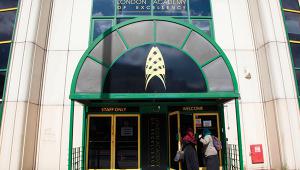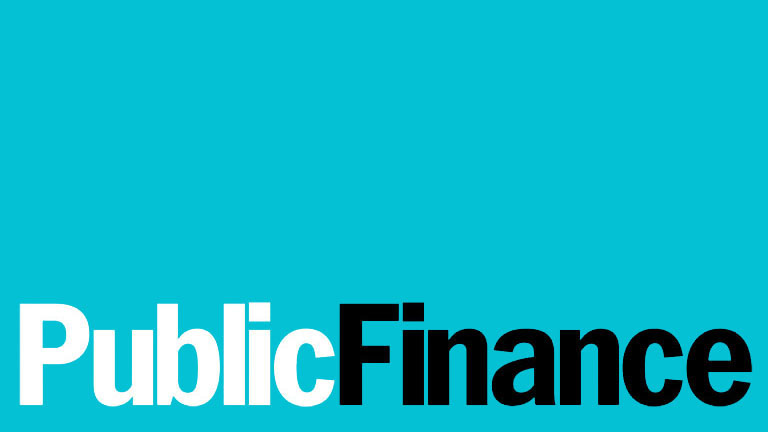
MICHAEL GOVE IS likely to be remembered as the most ambitious education secretary since Kenneth Baker in the late 1980s. Understandably, most attention has focused on his changes to the curriculum and to examinations that directly affect children and parents. The media have also taken a keen interest in the free school programme, which allows groups of reachers, parents or volunteers to receive state funding for their own schools.
But free schools established or approved so far will educate only 130,000 out of the 7.5 million children at state-funded schools in England. The most dramatic and revolutionary parts of Gove’s programme concern who controls and runs the schools that the overwhelming majority of children attend.
The system he inherited dated, in its essentials, back to 1944 – and, in some respects, to the 19th century. It involved a balance of powers whereby, as former director of the London University Institute of Education Sir Peter Newsam puts it, ‘Neither local nor central government could exercise absolute control over any publicly funded school in England.’
Over the past 25 years, successive education secretaries have disturbed that balance. Gove proposes to demolish it completely.
In so doing, Newsam and others argue, he is opening the way to a ‘totalitarian education system’, with local government marginalised and all power concentrated in the Whitehall office of the Secretary of State for Education. ‘What is being created,’ writes Oxford University’s former professor of education, Richard Pring, in his new book, The life and death of secondary education for all, ‘is the most personally centralised education system in Western Europe since Germany in the 1930s’.
When Gove took office in 2010, several hundred academies, both outside local authority control and funded directly from Whitehall, already existed. Although some were originally city technology colleges set up by Baker in the late 1980s, most were replacements for schools categorised by Labour as ‘failing’. They were put under the control of private sponsors, although the requirement to invest up to £2m was eventually relaxed. With freedom to vary the national curriculum and teachers’ pay and conditions, the academies were expected to raise standards. Since Labour’s policy was designed to improve low-performing schools, nearly all served deprived areas.
While continuing to create such academies, Gove also invited high-performing schools to become academies in their own right. Academy status has become not just an answer to failure, but also a reward for success, spreading the supposed benefits of freedom more widely. Academies can spend at their discretion the money previously top-sliced from their budgets for local authority central services, such as careers advice and special needs. Many secondary and some primary schools leapt at this offer. These ‘converter’ academies mostly serve relatively favoured areas – they have significantly lower proportions of pupils on free school meals than other maintained schools.
By June 2013, 2,263 schools had converted, with another 781 in the pipeline. Most are secondaries and, together with sponsored academies, they account for well over half of England’s secondary schools. Gove’s ambition is for all secondaries to eventually take the same route, along with growing numbers of primary schools. What had previously been supplementary to mainstream education will itself become the mainstream. Local authorities, long since stripped of control over higher and further education, are on the point of losing secondary education.
Gove’s rhetoric about the benefits of liberating schools from local authority control obscures the central point: academies (including free schools) are solely dependent on him for their very existence. Under the 1944 settlement, neither Whitehall nor county hall could, on its own, open, close or change the character of a school (from, say, selective to comprehensive). Only the local authority could withdraw funding, and then only with the approval of the secretary of state, who was required to consider objections from parents and other interested parties.
Now, the trustees of each academy make a private contract with the education secretary – some details of which may be hidden because of commercial confidentiality – and he (or she) can terminate the funding at will, without parliamentary scrutiny or consultation with parents and the council. Having broken, as he proclaims, the local authority monopoly over schooling, Gove has created instead a monopsony in which one buyer faces many sellers.
For accounting purposes, academies are officially regarded as government offices, their accounts consolidated into those of the Department for Education. A commission set up by the Pearson think-tank and the Royal Society of Arts – both sympathetic to academies – described this ‘as a consolidation unprecedented in the history of UK government’. As the Commons Public Accounts Committee observed in April, information on how individual academies spend their money is often unavailable, which ‘limits the ability of communities to hold their local school to account’.
Councils are left with a marginal and ambiguous role. As they lose money to newly created academies, their services for special needs, English language tuition and so on will become increasingly unviable. Moreover, an authority remains responsible for ensuring that all children in its area are placed in a school, but cannot direct academies to expand and has no power over their admissions. Such schools act as their own admissions authorities, establishing their own criteria for which applicants have preference and their own appeal bodies for parents who challenge decisions. Research suggests these schools are more socially selective than community schools. They are also, according to some estimates, twice as likely to exclude pupils. Local authorities could be left with an ‘underclass’ of children whom no academy wants and insufficient funds to provide decent services for them.
As the powers of local authorities dwindle, those of private providers grow. The first academies were sponsored on an individual basis but, in 2004, the United Learning Trust sponsored its second and third academies, creating the first academy chain. Now, according to a report last year from the National College of School Leadership, the majority of academies are members of chains. Though many chains comprise only two or three academies – often comprising converter academies that have formed federations – nine consist of ten or more. The largest, Academies Enterprise Trust, has 75 schools; Kemnal Academies Trust has 38; School Partnership Trust has 32 (all but two opened since May 2010); E-Act 27 and the Harris Federation have 19. Though Gove claims his free schools ‘devolve power to Burke’s little platoons’ and even Marxists should support them because ‘they embody the ideal of the soviet, a self-managing institution run by workers’, 14 of the first 95 free schools were promoted by established academy sponsors.
At present, the chains cannot make profits from running schools, but critics point out that the chains often behave as profit-making companies do – for example, in what they pay senior executives. Pressure from Tory think-tanks and commentators to allow profit-making companies to take control of state-funded schools, as they do in Sweden, is intense. It seems likely that, if the Conservatives form a government after the next election, the ban will be relaxed. A thriving education services industry already exists, operating across national boundaries and making profits from providing, for example, careers advice for school-leavers, financial management for schools, supply teachers to cover staff absences and delivery of government projects. It is eager to control state-funded schools, as are big companies such as Serco that provide a vast range of public services from healthcare to speed cameras.
Most chains expect to continue growing. Some converter academies have joined established chains and more, particularly small primary schools, may do so as the challenges of running their own affairs become apparent. According to the leadership college report, two chains plan to add between 20 and 40 primary schools to their empires. Gove is creating a competitive market in school provision and, as markets mature, they normally consolidate into a few dominant providers. When the Tories privatised school inspections in the 1990s, 120 providers entered the market. Now there are just three.
Gove would argue that any dangers in allowing private providers into schools are outweighed by the benefits. Set free from ‘bureaucrats’, he believes, schools will lever up standards. Is this true? Claims for academies’ success in raising GCSE results – made by both Labour and Conservative governments – are widely contested. First, better results may be a consequence of pupil intakes with higher prior attainment and fewer learning disadvantages rather than of better performance. A London School of Economics study, while acknowledging that academy status had a small but significant effect on performance, noted that secondary schools ‘respond to being granted autonomy... by sharply increasing the “quality” of their pupil intake at year 7’.
Second, many of the academies’ GCSE successes derived from what Gove himself describes as ‘soft options’, eg vocational courses that give ‘equivalent’ qualifications to GCSEs. In almost a third of academies in 2010, not a single pupil achieved the five grades A* to C in core academic subjects required by Gove for the award of his new EBac. This compares with 8% of non-academy secondary schools.
Third, the claims made for privately run academies are based largely on those established by Labour, usually with new buildings, new heads and many new teachers. As the Public Accounts Committee observed, any such school, however it is run, is likely to enjoy better morale and behaviour, leading to improvements in pupils’ attainment.
Evidence from abroad is equally mixed. Stanford University, California, reports that pupils in US charter schools – one of the models for Gove’s free schools – gain, on average, better results in reading than peers of similar ability in mainstream schools. But there is no gain in maths. These results for 2012 are far better than those from a previous Stanford study for 2009, when charter school pupils lagged in both reading and maths. However, the study emphasises, charter schools are not getting dramatically better; the average improvement is largely driven by the closure of bad [charter] schools. And only one in four charter schools achieves better results than neighbouring mainstream schools.
In Sweden, another Gove model, research again finds modestly positive results not only for privately run free schools but also, presumably because of the effects of competition, for neighbouring schools. These results, however, do not translate into improved results in further and higher education. Those who attended free schools did no better than other young people in tests at 18. Moreover, earlier benefits were, according to Rebecca Allen of London University’s Institute of Education, mainly for children from highly educated families; the impact on low-educated families and immigrants was close to zero.
Sweden’s free schools provide no support for Gove’s claim that his revolution will improve the performance of English children against their peers overseas. Since 1995, when the first free schools were emerging, Sweden’s scores on international maths and reading tests have fallen steeply. Moreover, several studies suggest free schools increase social and ethnic segregation and widen the social gap in achievement. As Susanne Wiborg, also from the Institute of Education, points out, if such reforms could increase inequality in ‘a country with a universal welfare state and a relatively high level of social equality, then other countries could risk an even greater increase’.
The case for Gove’s revolution – centralising control of schools and handing their running over to private providers – is not proven. Nor is it clear that drastic change is necessary. According to an analysis by McKinsey and Co, English schools do better than schools in the US, Australia, New Zealand and most other European countries. But the revolution continues at giddying pace and high expense.
Gove, it seems, has allowed his neo-liberal beliefs in the effectiveness of competition and the superiority of private provision to outrun the evidence.
This feature was first published in the September edition of Public Finance magazine





















